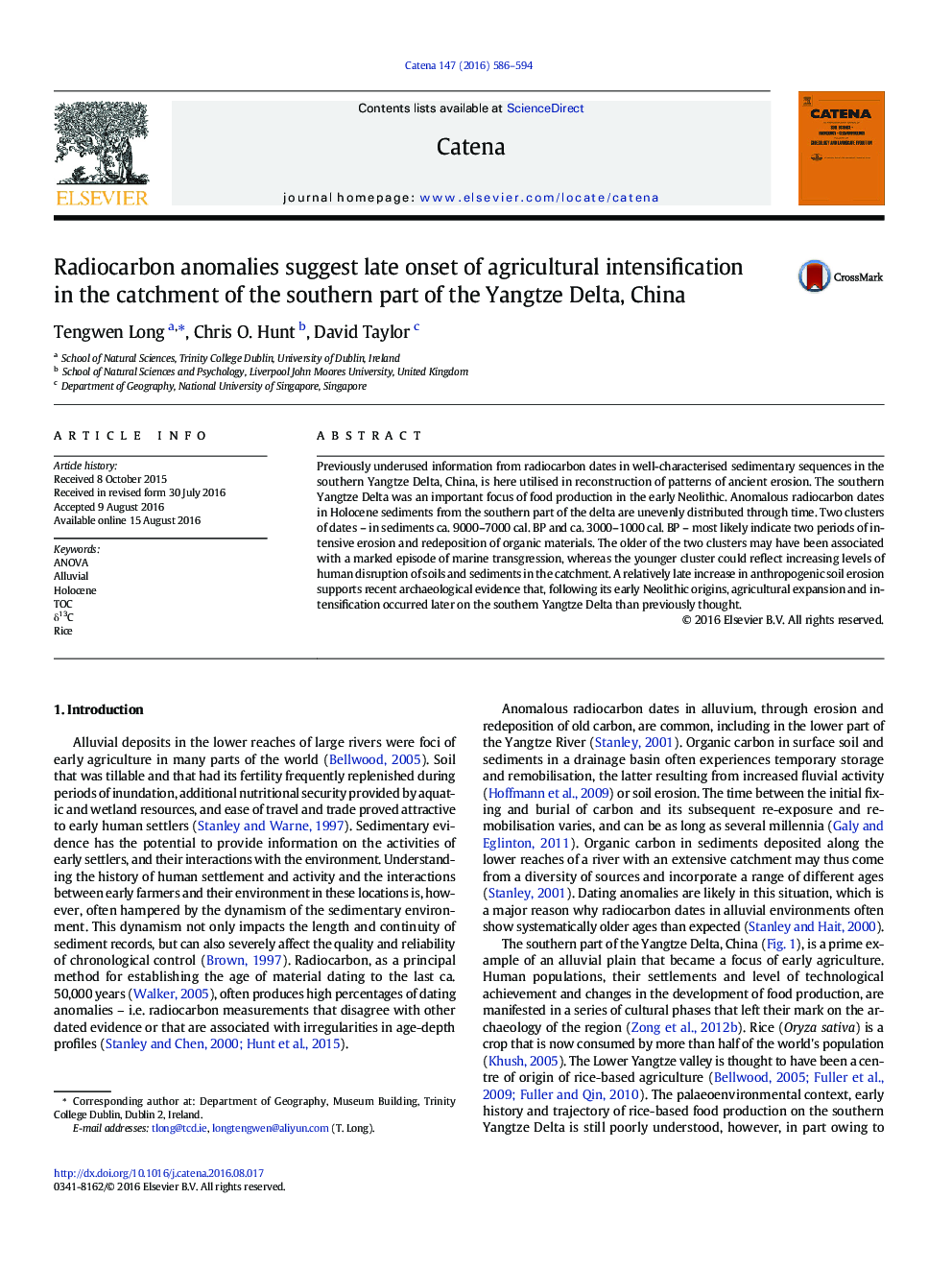| کد مقاله | کد نشریه | سال انتشار | مقاله انگلیسی | نسخه تمام متن |
|---|---|---|---|---|
| 6407776 | 1629205 | 2016 | 9 صفحه PDF | دانلود رایگان |
- Erosion history for the catchment of the southern part of the Yangtze Delta
- Radiocarbon anomalies provide evidence for erosion of older soils and sediments.
- An early Holocene cluster of radiocarbon anomalies reflects marine transgression.
- A later anomaly cluster suggests erosion from a late expansion of agriculture.
Previously underused information from radiocarbon dates in well-characterised sedimentary sequences in the southern Yangtze Delta, China, is here utilised in reconstruction of patterns of ancient erosion. The southern Yangtze Delta was an important focus of food production in the early Neolithic. Anomalous radiocarbon dates in Holocene sediments from the southern part of the delta are unevenly distributed through time. Two clusters of dates - in sediments ca. 9000-7000Â cal. BP and ca. 3000-1000Â cal. BP - most likely indicate two periods of intensive erosion and redeposition of organic materials. The older of the two clusters may have been associated with a marked episode of marine transgression, whereas the younger cluster could reflect increasing levels of human disruption of soils and sediments in the catchment. A relatively late increase in anthropogenic soil erosion supports recent archaeological evidence that, following its early Neolithic origins, agricultural expansion and intensification occurred later on the southern Yangtze Delta than previously thought.
Journal: CATENA - Volume 147, December 2016, Pages 586-594
